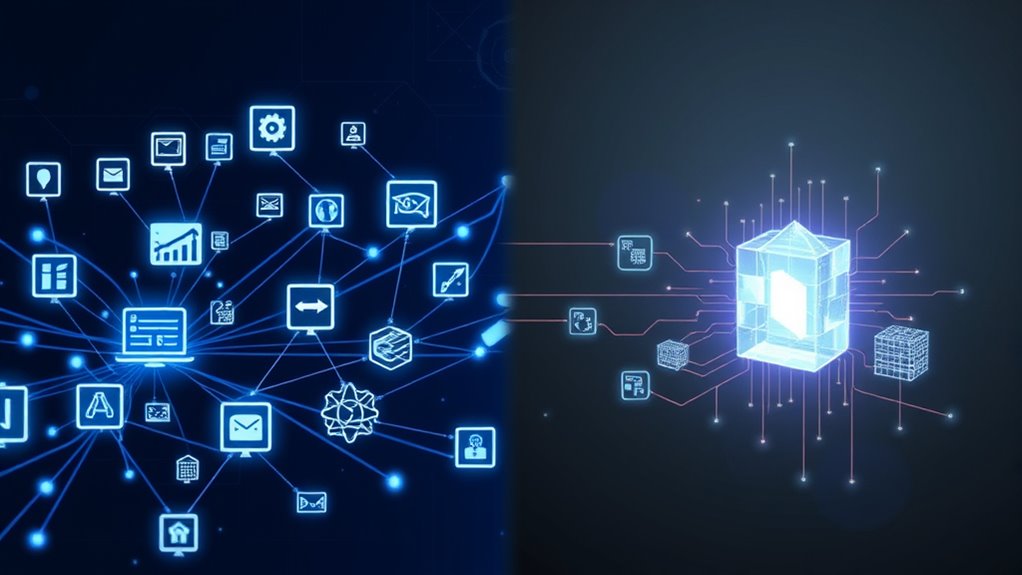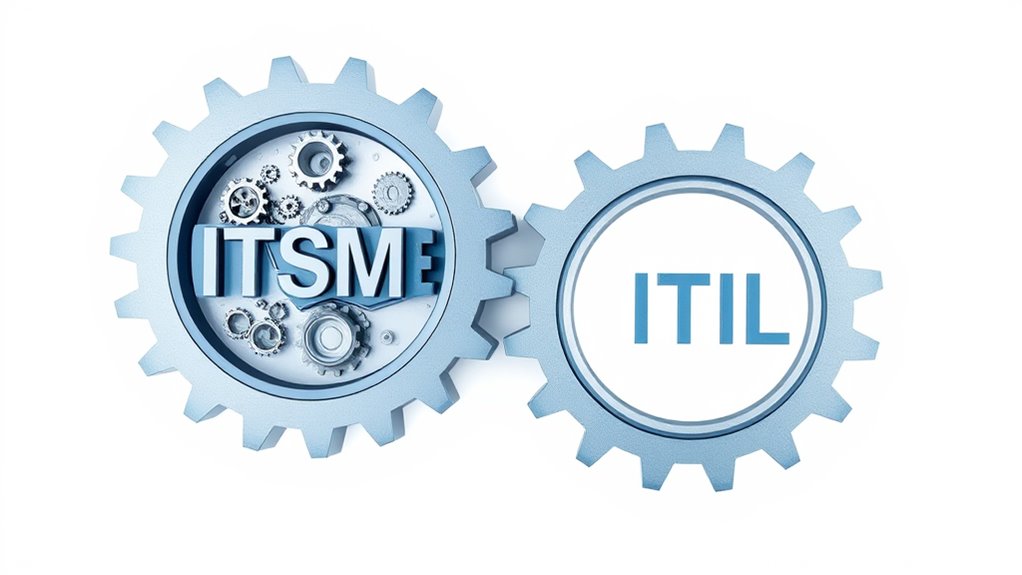Application integration and data integration serve different but complementary purposes in enterprise systems. Application integration focuses on connecting software applications for seamless communication and workflow automation, using APIs and middleware to process smaller data volumes in real-time. Data integration consolidates information from various sources into a unified view, employing ETL tools to handle larger data volumes in batch mode for analytics and reporting. Understanding these distinctions helps organizations implement the right integration strategy for their specific needs.

While both application integration and data integration play essential roles in modern enterprise architecture, they serve fundamentally different purposes in how organizations manage and utilize their digital resources.
Application integration focuses on connecting multiple software applications to enable seamless communication and workflow automation across systems, while data integration concentrates on consolidating and harmonizing data from diverse sources to provide a unified and accurate view of information.
Integration bridges systems through automation, while data harmonization creates a single source of truth for organizations to leverage.
The fundamental distinction lies in their primary objectives and use cases. Application integration guarantees different applications within a business process can share data and coordinate tasks effectively, such as linking CRM systems with ERP platforms for streamlined order processing. This enhanced coordination improves data consistency and supports better collaboration across departments. Modern solutions often leverage cloud-based systems to maximize accessibility and scalability.
In contrast, data integration enables organizations to analyze information from multiple disparate sources in a unified form, like merging customer data from web, social media, and in-store channels for thorough insights. The integration process often utilizes third-party applications to enhance functionality and data sharing capabilities.
Technical approaches and tools differ greatly between these integration types. Application integration relies on APIs, middleware, connectors, and enterprise service buses to connect and synchronize applications in real-time.
Data integration utilizes ETL tools, data pipelines, and specialized platforms focused on extracting, transforming, and loading data to create coherent data models for analytics purposes.
The handling of data also varies considerably between these approaches. Application integration typically processes smaller amounts of data in real or near real-time to enable immediate action, prioritizing speed and operational responsiveness.
Data integration, however, works with larger data volumes in batch mode, focusing on detailed data cleansing and harmonization to guarantee accuracy and consistency.
Implementation of these integration strategies requires different organizational approaches. DevOps teams typically manage application integration, guaranteeing smooth operational workflows and immediate system responses.
Meanwhile, data integration often falls under the purview of data teams, who focus on maintaining data quality and creating thorough analytical capabilities for business intelligence and reporting purposes.
Frequently Asked Questions
What Are the Main Security Risks Associated With Integration Solutions?
The primary security risks in integration solutions stem from four key areas: third-party vulnerabilities, API weaknesses, human error, and resource constraints.
Third-party breaches account for 30% of incidents through supply chain attacks.
APIs face increasing threats from unauthorized access and data leakage.
Human errors cause 82% of cloud misconfigurations.
Limited cybersecurity expertise affects 71% of organizations, hampering proper security implementation and maintenance.
How Long Does a Typical Integration Project Take to Implement?
Integration project timelines typically range from 3 weeks to 8 months, depending on complexity and scope.
Simple API integrations require 8-15 weeks from research to deployment, while complex legacy system integrations can extend beyond several months.
Key phases include:
- Research and preparation: 2-3 weeks
- Technical design and development: 3-6 weeks
- Testing and refinement: 2-4 weeks
- Deployment and monitoring: 1-2 weeks
PIM system integrations generally take 4-8 months to complete.
Which Integration Approach Is More Cost-Effective for Small Businesses?
Data integration is typically more cost-effective for small businesses due to lower initial costs and maintenance requirements.
While enterprise integration platforms cost $10,000-14,000 annually, data integration tools offer more affordable options with low-code capabilities that reduce dependency on expensive developers.
Small businesses can achieve faster ROI through data integration’s simplified setup, batch processing approach, and scalable features that adapt to growing needs without substantial re-engineering costs.
Can Integration Solutions Work With Legacy Systems and Outdated Technologies?
Modern integration solutions can effectively work with legacy systems through various approaches.
Wrapping legacy systems with APIs enables communication without altering original code.
Enterprise Service Bus (ESB) middleware standardizes data transformation between old and new systems.
Cloud integration platforms provide scalable connectivity options, while iPaaS offers managed services for legacy integration.
These methods can overcome common challenges like data format incompatibility and security concerns through proper implementation strategies.
What Skills Are Required for Teams Managing Integration Projects?
Integration teams require a diverse skill set spanning technical and managerial competencies.
Technical skills include proficiency in ETL tools, APIs, programming languages, and database management.
Analytical abilities focus on troubleshooting and architecture design.
Project management expertise involves coordinating multiple teams and managing timelines.
Security knowledge encompasses data protection, compliance frameworks, and governance practices.
Teams must also possess strong collaboration and communication capabilities.









